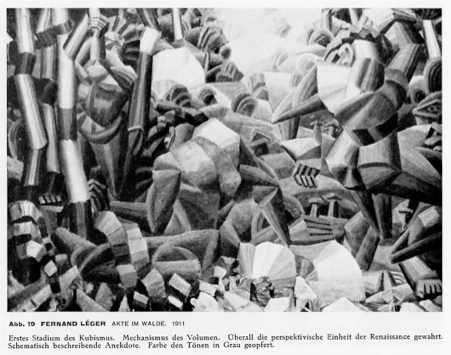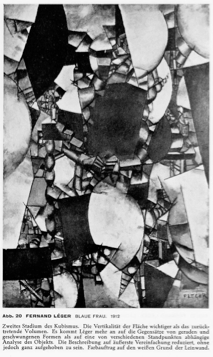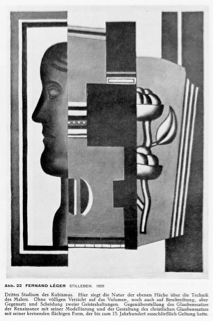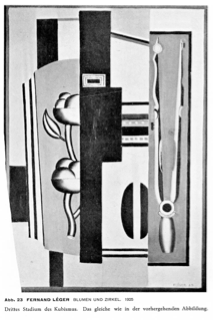Back to item index
Previous (Henri Le Fauconnier)
Fernand Léger

19. Fernand Léger: Nudes in the Forest, 1911
First phase of Cubism. Emphasis on the mechanism of volume. Everywhere the perspective unity of the Renaissance is reaffirmed. The descriptive anecdote is expressed schematically. Colour is sacrificed to tones of grey.

20. Fernand Léger: The Blue Woman, 1912
Second phase of Cubism. The verticality of the surface is now more important than the volume which is in retreat. Léger is more concerned with contrasting straight and curved lines than with the element of analysis, based on the multiplicity of the points of view from which the object is seen. The description is simplified as far as possible without, however, being abandoned entirely. The colour is applied directly to the white base given by the canvas.

21. Fernand Léger: Roofs in the Forest, 1914
Another example of the second phase of Cubism. The contrasts of straight and curved forms ever more clearly marked. It is about this time that Léger, purely intuitively, speaks of his desire to realise an expression of plastic dynamism. Later, he will adopt the rotating circles of Delaunay.

22. Fernand Léger: Still Life, 1925
Third phase of Cubism. Here the nature of the plane surface becomes dominant in the artist's technique. While neither volume nor description are abandoned entirely, we see the two states of mind separated out and shown in opposition one to the other. The dogma of the Renaissance with its modelling is counterposed to the plastic nature of Christian dogma with its circular form realised through the surface. It was this latter form which, exclusively, had been recognised as valid prior to the thirteenth century.

23. Fernand Léger: Flowers and compass, 1925
Third phase of Cubism. The same comment can be made as for the previous illustration.
24. Fernand Léger: Woman at her toilet, 1925
Third phase of Cubism. Here again, the same can be said as for the illustrations 22 and 23. The surface is put into movement and divided into sections, and this corresponds to one essential aspect of its nature - that of translation. But its capacity to enter into rotation is not taken into account.